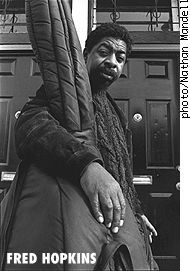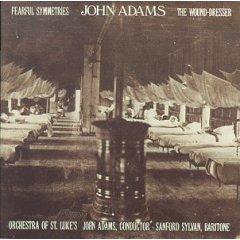
On any music-oriented discussion site I've ever seen, the subject of LP and/or CD filing emerges at least annually and is greeted with the appropriate amount of seriousness, which is to say: life and death.
Back since the days when my LP collection occupied about two linear feet of bookcase space, I've always used the same system, the onlu one that makes any sense at all and the one that, upon my attaining kingship of the world, will be enforced by dint of law: Alpha/Chrono. Which is to say, alphabetically by Last Name or Group Name and chronologically within that person/group. Absolutely no distinguishing between "genres". Brahms sandwiched between Bobby Bradford and Glenn Branca. Caetano Veloso abuts Nikos Veliotis and Matthijs Vermeulen. Back when the notion of a "record store" (kids may wish to google on the concept) was something to dream about, I loved the idea of a shop set up in just such a fashion. "Where would I find music from Mozambique?" "Over there, between Don Moye and Mozart."
The above exchange touches on one of the difficulties encountered using this system. Where does one file field recordings where no individual musicians are listed? Well, if forced to do so, under the country of origin. How about split recordings, often found in classical music? I usually opt for the composer most prominently featured though, if it's the case that I bought the disc due to the presence of a shorter included work, I may well file it under that name. Minor matters!
The benefits, aside from ease of locating a given release, are significant. I've long held to the practice of "playing through" my collection. That is, when there's nothing pressing upon me to listen to (like stuff I'm supposed to be reviewing), I'll trip alphabetically through my stock, happening on albums I might never get back to otherwise. If you own a decent number of records by a given individual/group, the chrono set-up affords a nice walkthrough of their history. If one's collection is sufficently catholic, you also get excellently jarring back to back listens as indicated above. Why people file otherwise escapes me!
Anyway.
With LPs there was virtually no variation in size, apart from width to accommodate multiple albums. I assume somewhere along the line, this or that person released something in outsized packaging (examples?) but I don't remember seeing such and nothing of the sort made it into my little grubbies. The LPs all fit nicely into their compartment. btw, back around 1980, my great friend Marc, a woodworker by trade, and I devised and constructed a piece of furniture specifically designed for LP storage. Eight feet long, with four 13" high storage areas, it's a wonderfully functional piece, capable of holding about 800 LPs. I have about 1,000. Placed in a corner of the room, the additional couple hundred records can be leaned into the corner, the remaining surface serving as a platform for the receiver/amp and turntable.
CD's, on the other hand, lend themselves to a wide variation in size and shape. My basic storage units are simple, wooden "crates" designed for CDs and taking up as little space as possible. I have (by necessity, as I purchased them over time) several kinds but they're fairly similar, sometimes dangerously stackable. My CDs currently number over 1,800 and new space is always required, so they've oozed into adjacent bookshelves and the like. However, the storage units generally are fit to house standard sized cases. Anything much larger needs its own area and I have a whole bunch that are much, much larger (also about 25-30 3" discs in tiny, cute packages, easily arrayed, thus far, in front of their normally sized cousins on a bookshelf).

The large packages are set on top of a couple of the storage cases, alpha order of course, their irregular heights creating two small cityscapes. Conveniently, a couple of boxed sets (AMPLIFY and the IMJ wooden box) serve as "bookends" for one, a couple of glasses filled with small stones for the other. One of the main "offenders" in the oversized department is a wonderful label out of Berlin called absinth, run by Marcus Leibig.
Most of the twelve releases so far on absinth come enclosed in 7" sleeves, hand-stitched with individually decorated covers, all quite attractive. Most all very good music as well, including the latest by Mark Wastell, "Amoungst English Men" (although this last opinion isn't universally held--see Robert Kirkpatrick's well-argued point of view
here). In any case, when browsing through my collection for this or that reason, I often will initially forget about these outliers, as I have yet again. I reviewed this one at Bagatellen in April 'o5
here so won't go through it again. Suffice it to say that anyone reading this should do themselves a favor and pick up an absinth disc. Hard to go far wrong.
Listening:Two arrived yesterday from Azul Discografica, on each by Starving Weirdos and Howlin' Magic.
*sigh* these kids today and their wacky names......




























